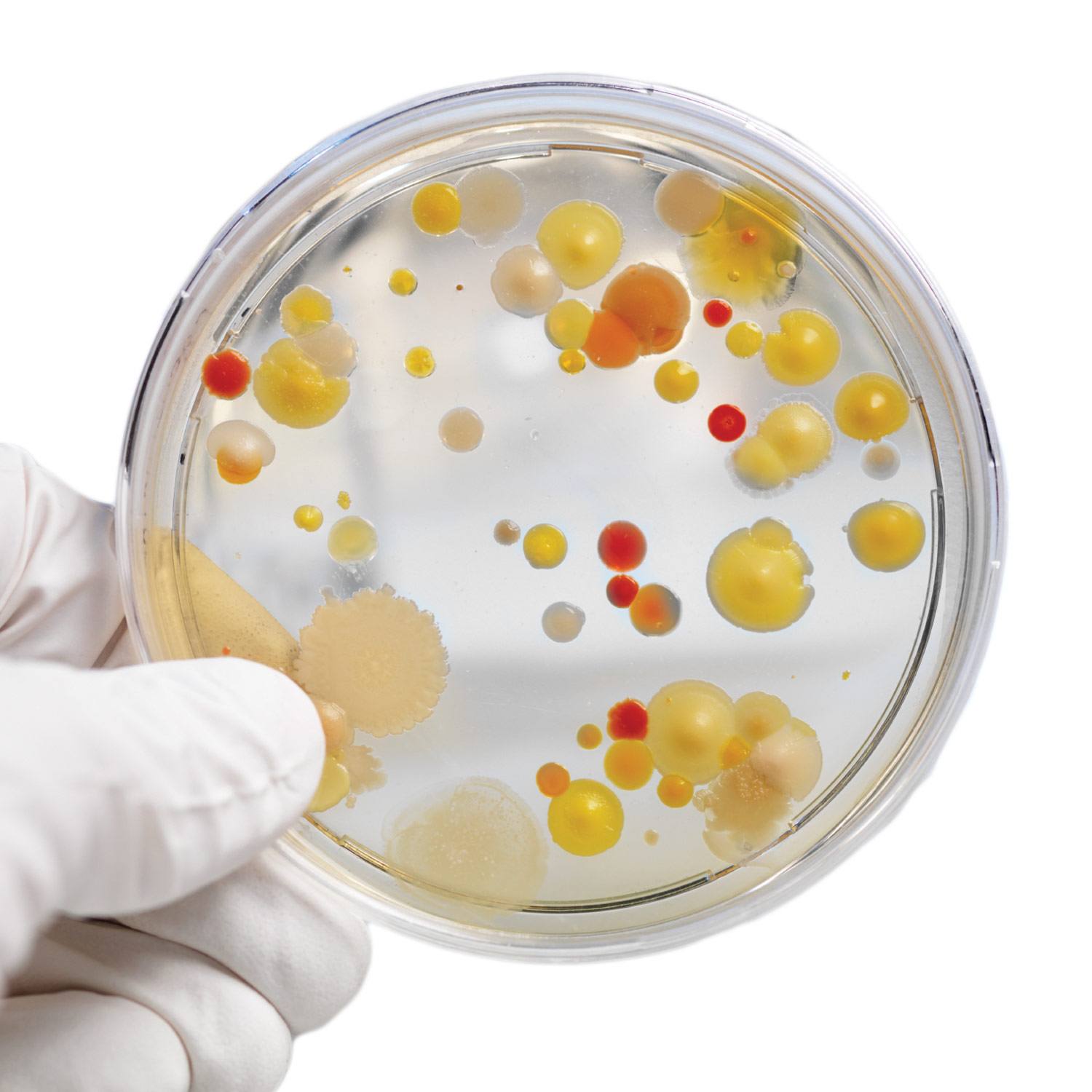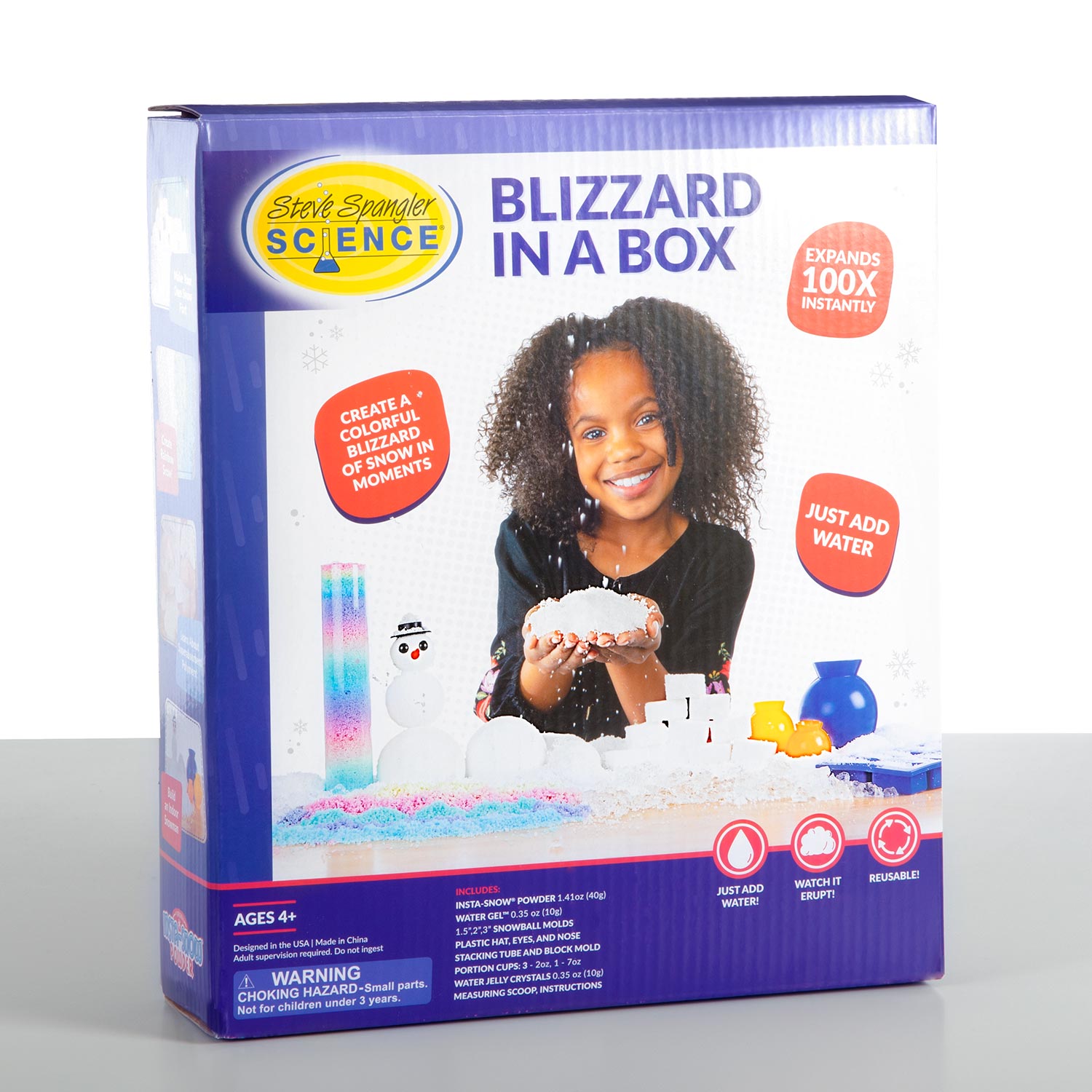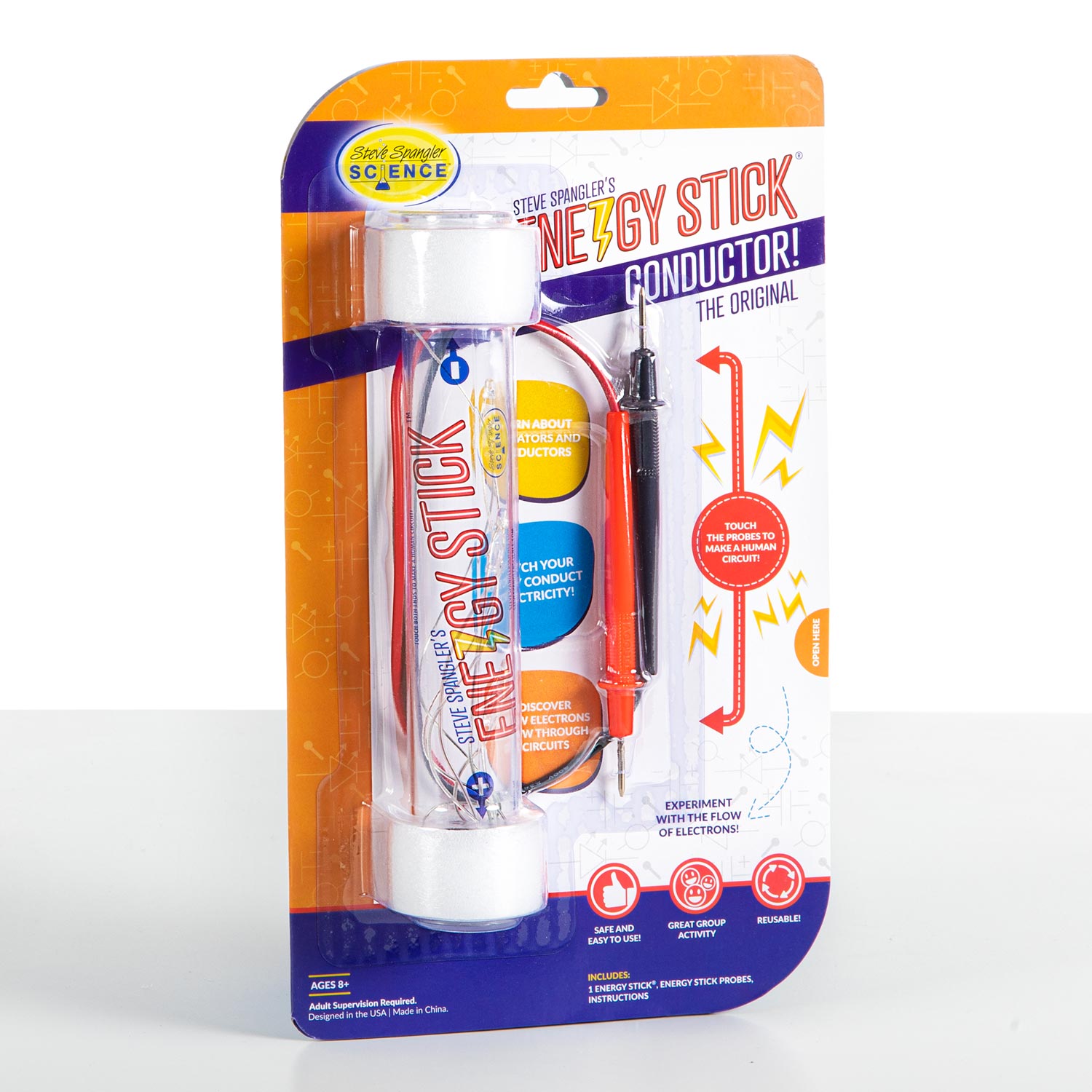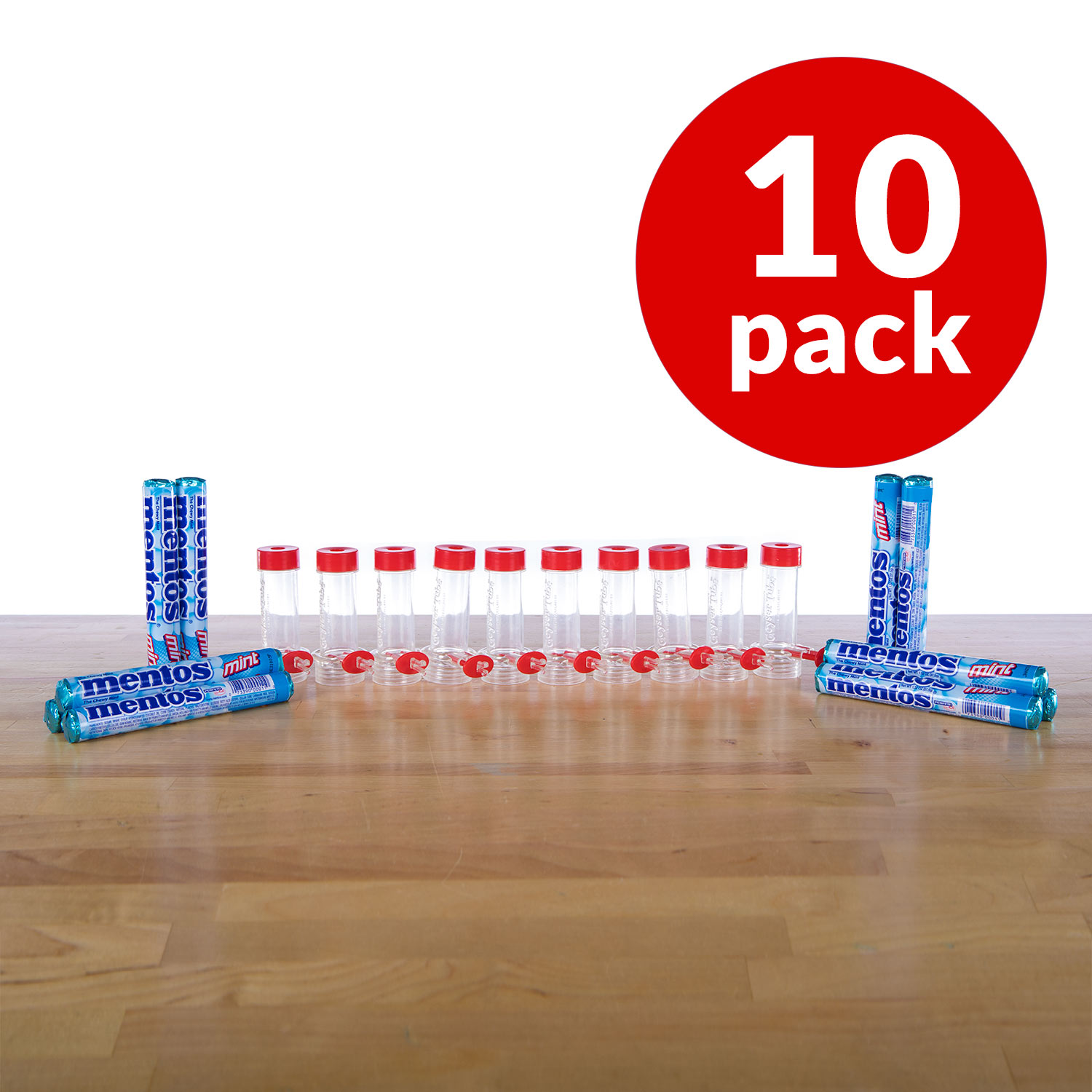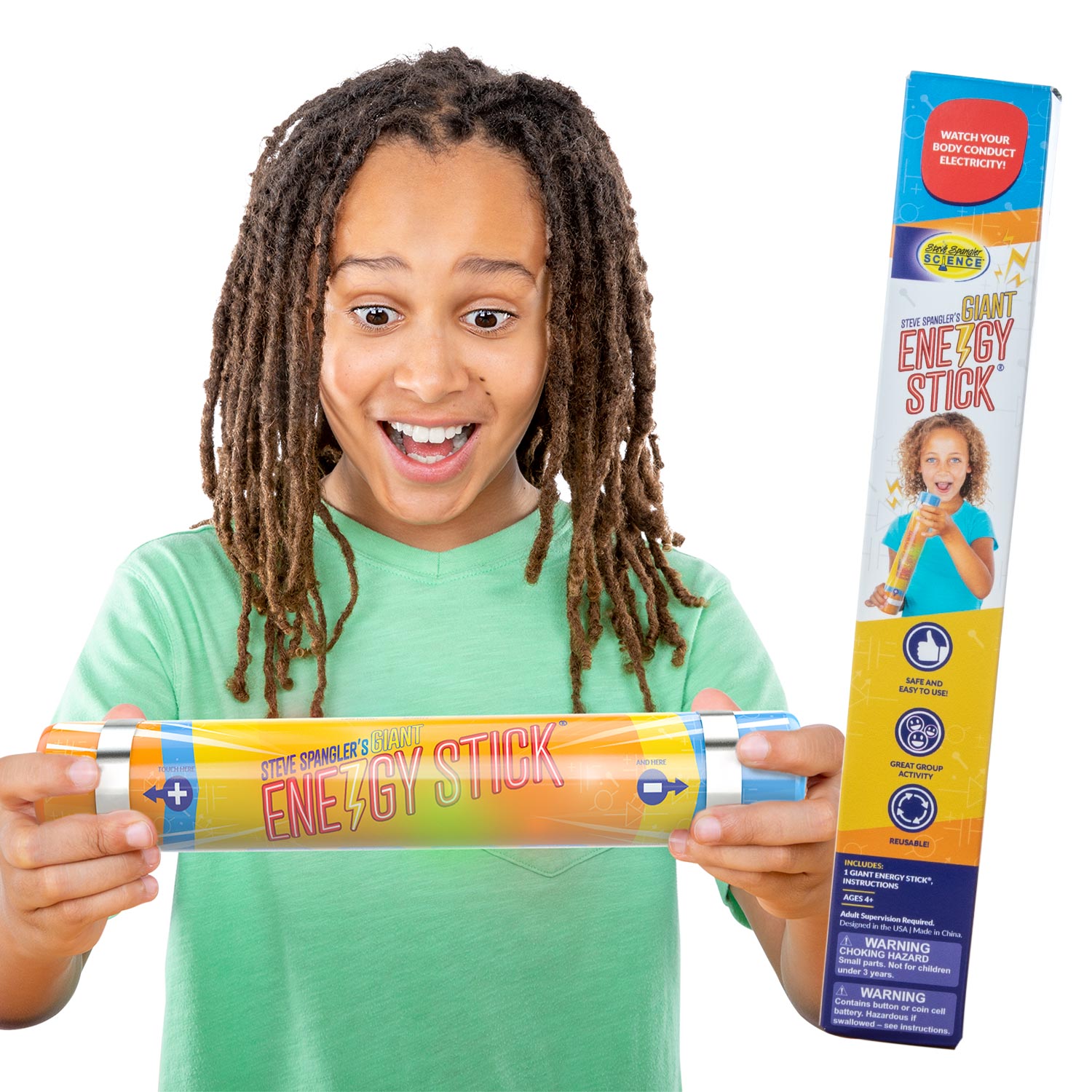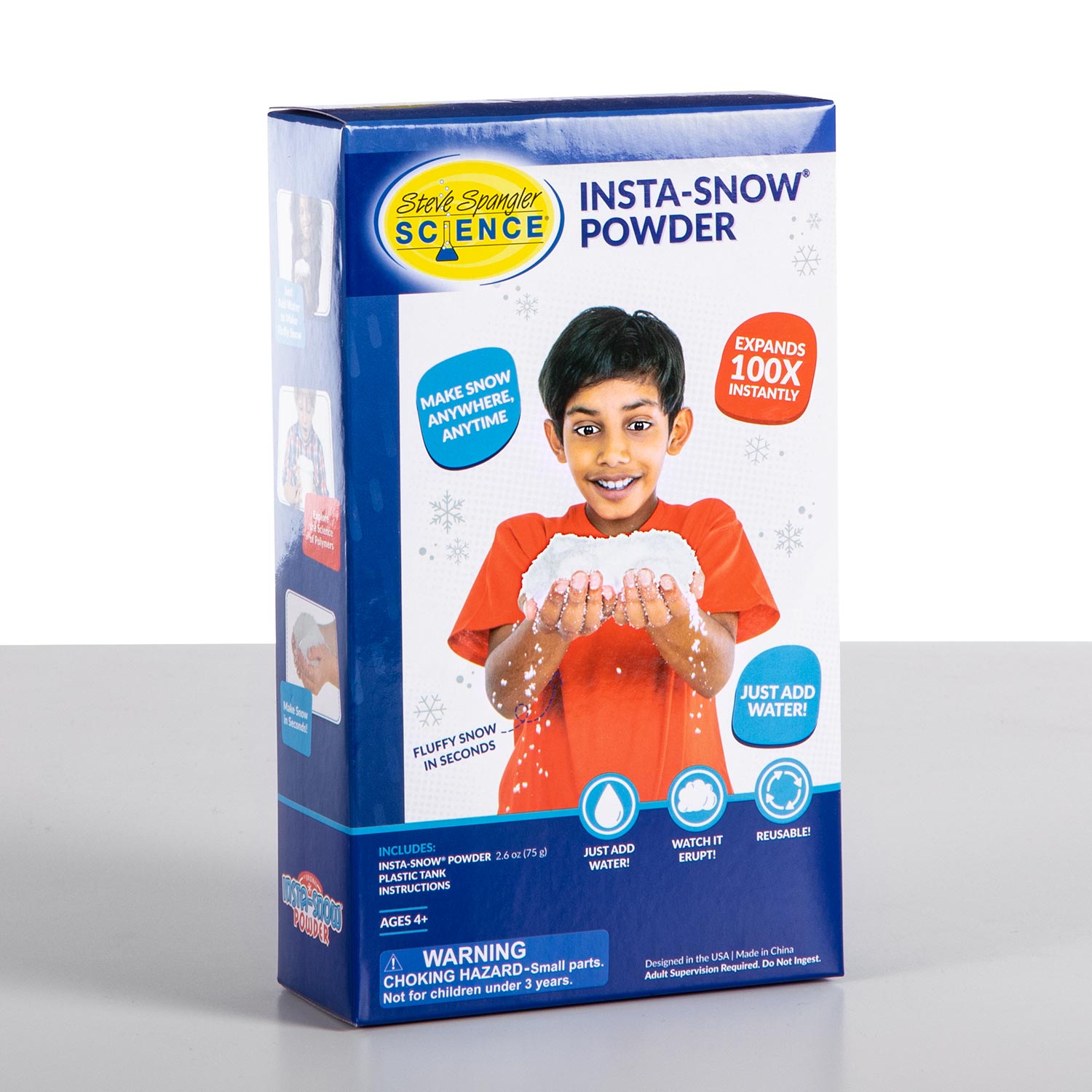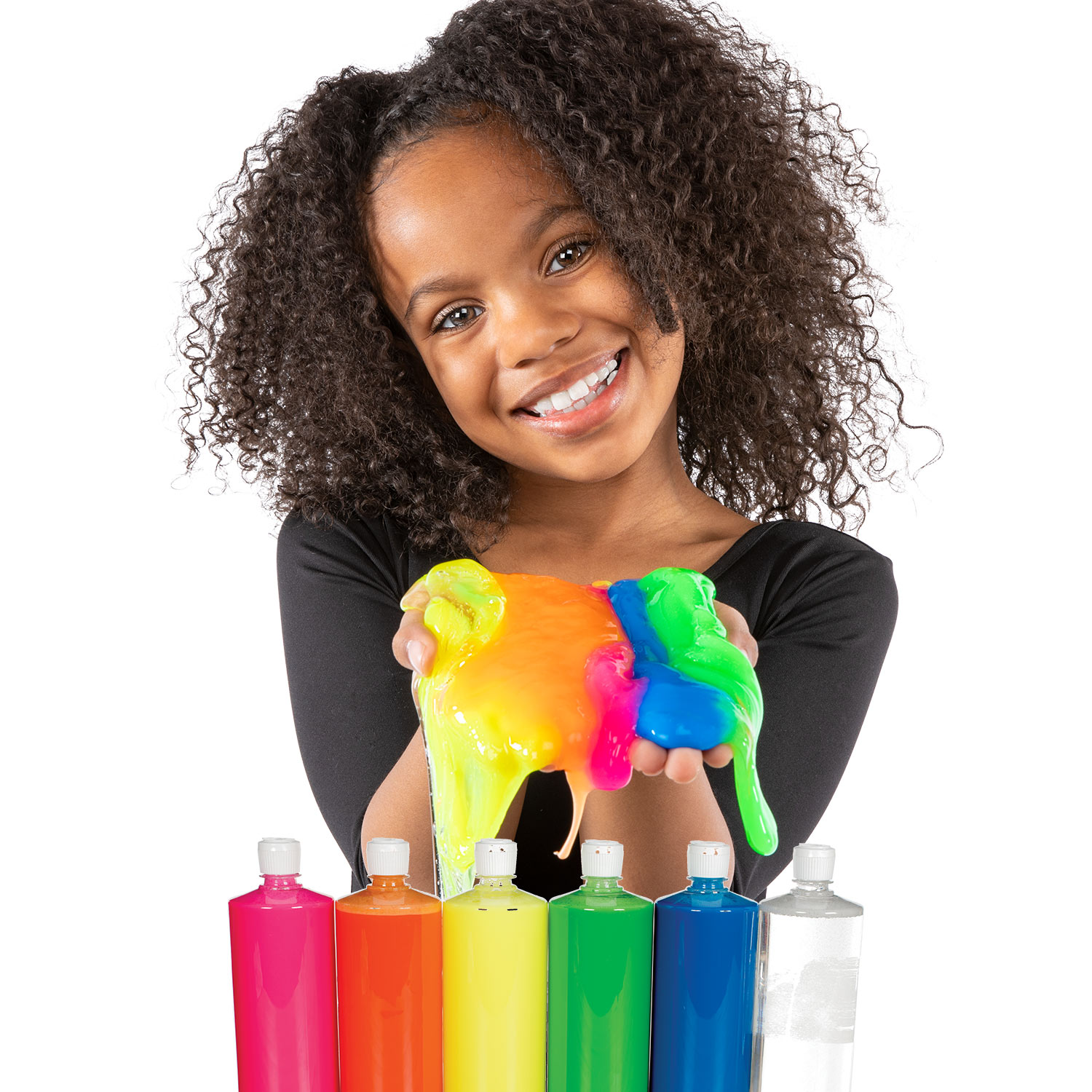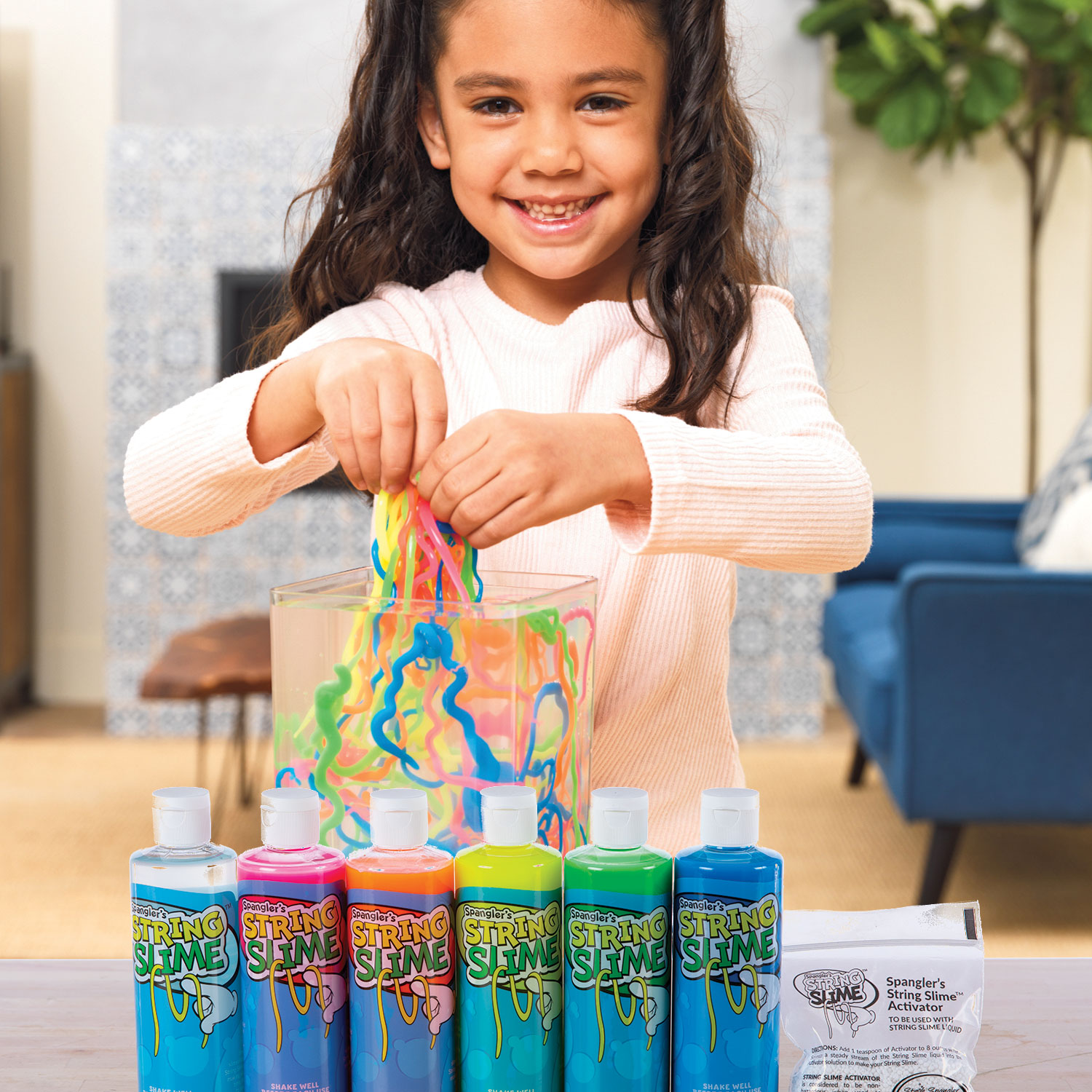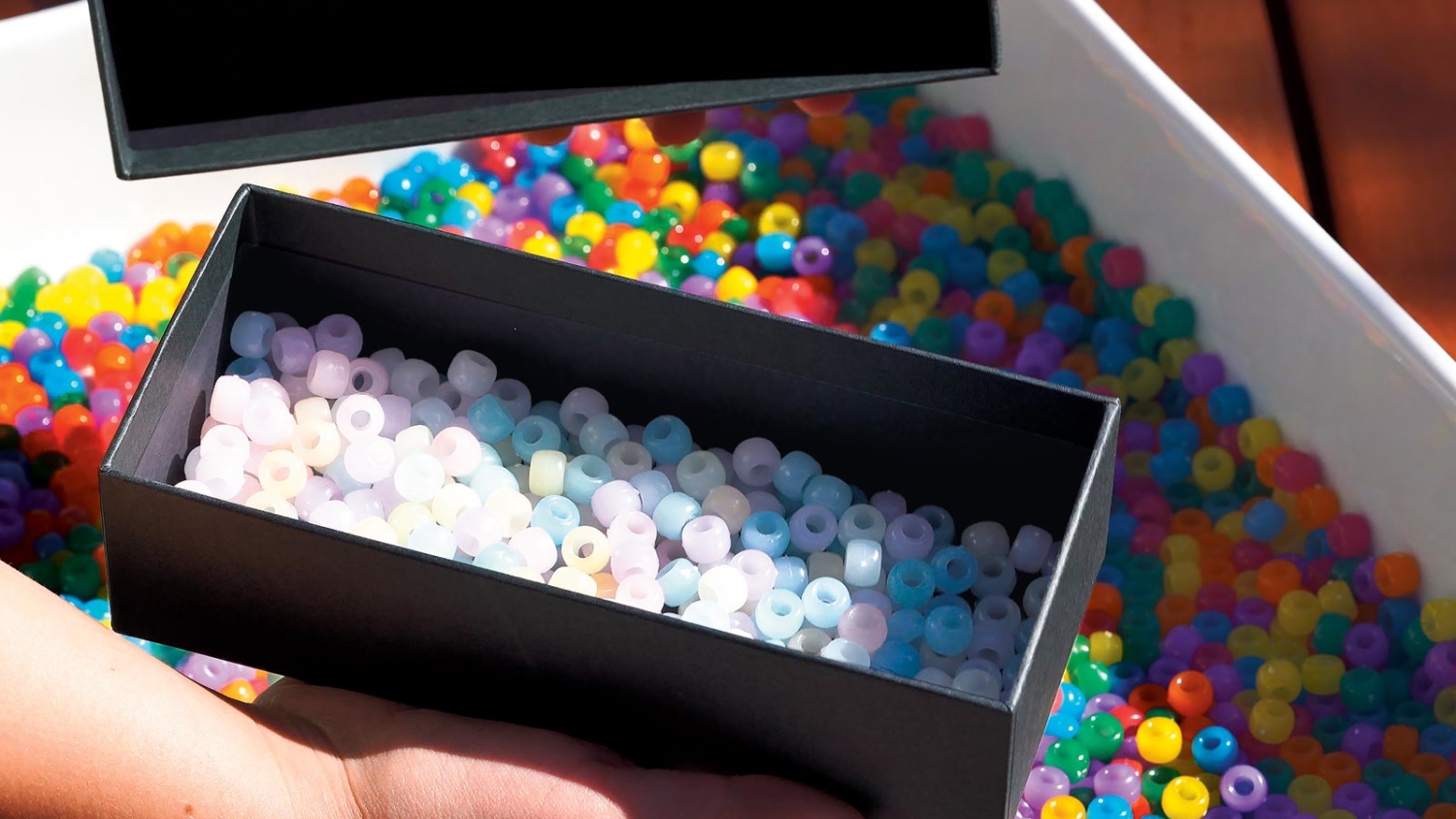
Revealing UV with Color – Changing Beads
Dangerous ultraviolet (UV) light can be revealed using simple, white beads
Knowing you’ll spend some time in the sun, you carefully spread a sunscreen lotion labeled “SPF 50” on exposed skin. The next day, you look and feel like a steamed lobster. What happened?! Instead of using your skin as a UV detector, do a test with simple white beads to see if the sunscreen you are using is effective. These beads change color when exposed to UV light. Knowing the effectiveness of your sunscreen will make your sun time more of a fun time.
SICK Science® is a registered trademark of Steve Spangler, Inc. All Rights Reserved.
Experiment Materials
- Color-Changing UV Beads
- 4 Zipper-lock bags
- Dark marker
- Sunscreen (3 different SPF values)
- Measuring spoons
- Cookie sheet or tray
- Cord or yarn (for necklace and bracelet)
- Black light (optional)
Experiment Videos
Experiment
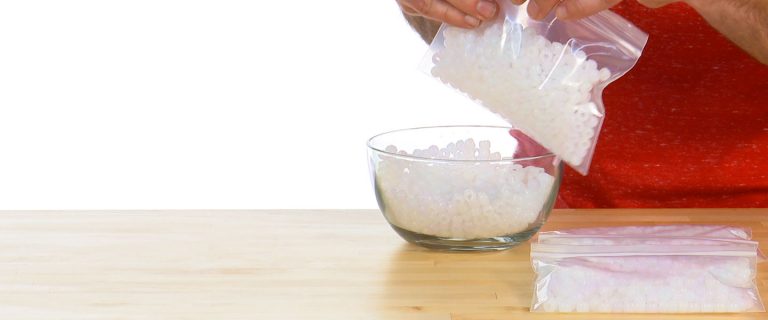
1
Divide the Energy Beads into four equal piles and dump each pile into a plastic bag.
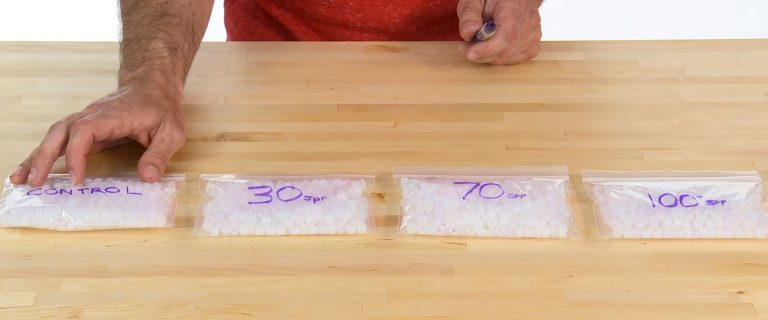
2
On one of the plastic bags use the marker to write the word “Control.” On one of the other bags write the name and the SPF number of one of the products you’re testing. Keep the bag with the corresponding bottle of sunscreen and do the same labeling with the other types of sunscreen.
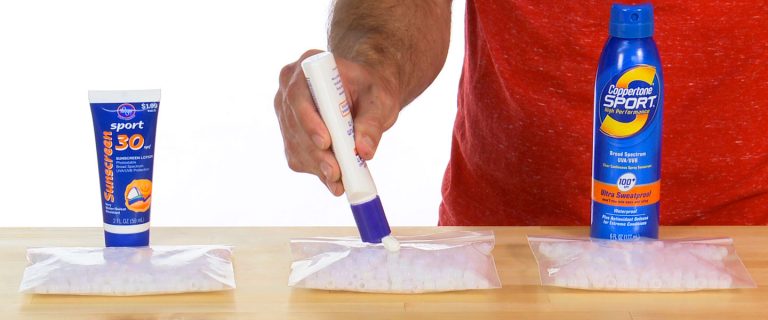
3
On the unlabeled side of a bag, smoothly and evenly spread a half-teaspoon of sunscreen directly onto the bag. Do the same with the other two bags and their corresponding sunscreens. The Control bag receives no sunscreen. Be sure to wash your hands in between each application so the test is fair. Let the sunscreens dry completely.
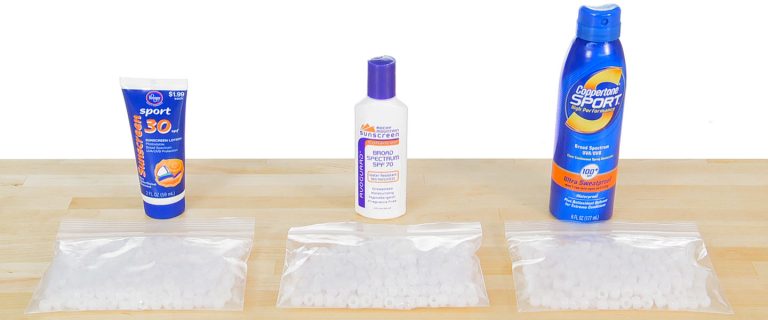
4
Go outside. Lay the four bags, labels down, next to each other in direct sunlight and watch them for two to three minutes.
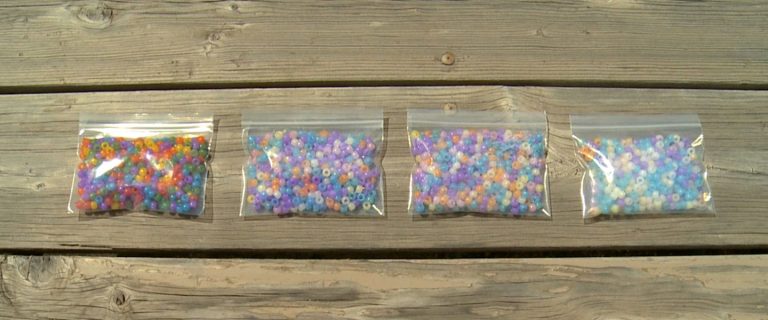
5
Keep the labels down and sort the bags on the cookie sheet by the brightness of the colors you see. Place the brightest colors at the left, palest colors at the right, and the other two bags by decreasing colors in between. Go into the shade (or inside) and turn the bags over to check the labels to see how effective your sunscreens truly are.
How Does It Work
These beads are very sensitive and will always change color a little regardless of how well a sunscreen works. If the sunscreen products are performing as advertised, however, you should easily see color differences in the bags. The Control bag on the left is full of colorful beads. At the right should be the palest beads under the highest SPF product with lower numbers on the other two bags as the colors get less bright.
How are the products performing? Their ingredients don’t necessarily “block” UV light as much as absorb UV photons so they don’t get to your skin at full intensity. As you can see (hopefully), some get through the lower SPFs but many are stopped by the higher SPFs. You didn’t see these results? Sunscreen products do have a shelf life and it’s not very long. They break down over time so plan on buying a fresh supply of sunscreen each summer.
UV Beads contain pigments that turn colors when exposed to UV light. The beads are white in ordinary, visible light but in UV light, you’ll see different colors depending on the pigment added to each bead. The beads will change from white to a color about 50,000 times before the pigment will no longer respond to UV light.
There are many forms of light energy and UV is one of them along with incandescent light, fluorescent light, halogen lights, LEDs, sunlight, neon, and others. They’re different based on the wavelengths they produce and how the light is produced. Some of these wavelengths create the visible spectrum and allow us to see colors. None of the energy present in the UV part of the spectrum is visible to the human eye. However, when the beads are struck by UV light, a chemical reaction occurs that causes a specific wavelength to be released so you can see a color on the bead. That’s when you know there’s UV radiation around you.
UV Beads are the perfect tool for understanding how solar radiation can be harmful and to recognize measures that can be taken to reduce the risks associated with exposure to sunlight. When you expose bare skin to sunlight, your skin will either burn or tan (which doctors warn is still not healthy for you). UV radiation wavelengths are short enough to break chemical bonds in your skin tissue and, with prolonged exposure, your skin may wrinkle or skin cancer may occur. These responses by your skin are a signal that the cells in your skin have been assaulted by UV radiation for a long time. Wear a hat, use sunscreen, and be aware of the UV Index report from your local weather forecaster.
Take It Further
Tube Test
Place a handful of UV beads under a fluorescent light. What color changes do you see in the beads? Based on the intensity of the colors you see, what are the chances you can get a sunburn or a tan by sitting next to a fluorescent light?
Black Light
Black light (long-wave UV light) can also change the color of the beads. You can purchase a small black light at many specialty or hardware stores that have a large section of light bulbs. Steve Spangler Science also sells mini-versions of them. Sometimes, high intensity lights (e.g. mercury vapor or halogen) found in gyms or along city streets emit just enough UV light to make the beads change color a little.
A UV Bead Bracelet or Necklace
Thread a few beads onto a piece of leather, yarn, or string to make a bracelet and/or a necklace. When you’re finished, cover the bracelet with your hand and walk outside into the sunlight. Don’t take your eyes off the beads as you expose them to UV light. Like magic, the beads change from boring white to a rainbow of colors. The best part is telling your friends about the science behind the color change and that it can happen thousands of times, too.
Science Fair Connection
While testing the effectiveness of various sunscreens is one great idea for a science fair project, here are a few other ways to create experiments using UV Beads.
- Observe how well the beads change color when exposed to sunlight at different times of the day or in different conditions (like a cloudy or overcast day). According to your data, what time of day does the sun give off its most intense UV light? Most weather forecasts now include a UV Index so you can tell when it’s OK to stay out in the sun a little longer. The UV Index runs from 0 to 11+ and the higher the number, the less time you should be in the sun. The index changes based on the time of day and the season as well as the weather conditions. Your new bead detectors will reveal those changes.
- Test the ability of different sunglasses to block out UV light. Place a few beads in two cups. Cover one of the cups with a lens of the sunglasses and go outside with your cups. If the beads under the sunglasses don’t change color, the glasses block harmful UV light from your eyes.
- Test a variety of glass and plastic containers, or even prescription bottles, to determine which materials might block UV light. Place different transparent materials between a UV light source and the beads. You will find that the front windshield of most automobiles absorbs some UV radiation so the driver gets less eye strain. Usually, the side windows in a car do not have this built-in protection.
These are just a couple of ideas, but you aren’t limited to them! Try coming up with different ideas of variables and give them a try. Remember, you can only change one thing at a time. If you are testing different sunglasses, make sure that the other factors remain the same!



